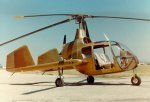ryanonthebeach
Newbie
I've been fascinated with gyros for a long time especially attracted to the STOL and the obvious benefits that brings but... I've not been able to find a gyro that's more than a 2 seater .. except the XEONON XL 3 seater but that has very limited storage space with 3 ppl, looks like a squeeze. I'm assuming there are no kit 4 seater gyros available to the US market or anywhere... I certainly can't find them. Very concerned I may have to settle for fixed wing kit like the Van's RV10. Need to haul 2 people 2 dogs and some small bags.
What gyrocopter has the most internal space available today?
Any technical reason why 4 seaters are so scarce? Understand the blade speed sound barrier limitation etc. but why zero offerings in the 4 seater range?
What gyrocopter has the most internal space available today?
Any technical reason why 4 seaters are so scarce? Understand the blade speed sound barrier limitation etc. but why zero offerings in the 4 seater range?

